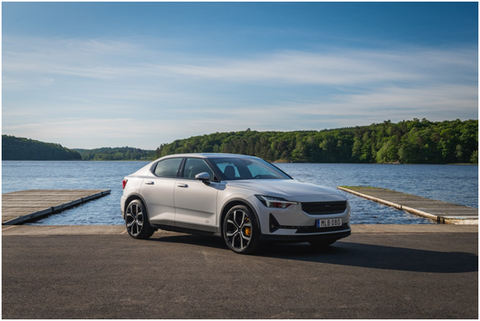
Polestar was originally known as Volvo's in-house tuner, just like Mercedes-Benz’s AMG division. Under the name Polestar Engineered, the brand has been acting as an internal brand tuner for Volvo since 2015. Volvo has also been owned by the Chinese Geely Group since 2010
However, everything changed for the Polestar in 2017. Geely Group and Volvo decided to turn it into an independent brand for hybrid and electric cars. They chose the polar star- used as a sign for north- as their new logo to fit the brand name and they started creating recognizably Nordic cars.
The first model was the Polestar 1, a plug-in hybrid. However, the Polestar 2, which was launched in Switzerland in the summer of 2020, is a real battery electric vehicle, without all the combustion engine fuss. And the good news is that the Polestar 2 is already available to the US buyer!
The Design
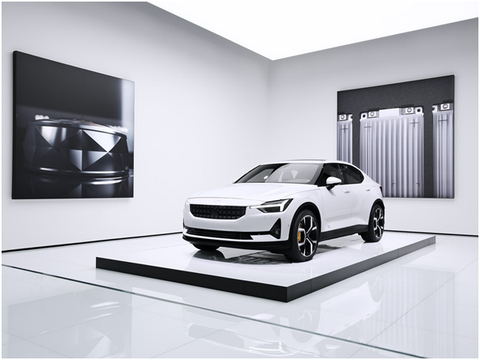
The Polestar 2 is a mixed-looking vehicle as it is a coupe sedan with a touch of crossover. Thanks to the hatchback and a few extra inches in height, the Polestar 2 subtly but definitely stands out from the typical look of a "normal" sedan. However, in a way that is quite coherent. It comes with a black exterior as standard and optional colors are various shades of gray, white or blue available for an additional charge.
With a length of 15 ft and a width of 5.9 ft (including mirrors), the vehicle is in a sweet spot. It really offers enough space for passengers and luggage, but still not so big that you have to despair when looking for a sufficiently large parking space in the city or in a multi-story car park.
The front is characterized by a large radiator grille, which is nevertheless not as dominant as in certain combustion models from Audi, for example. The LED headlights in the shape of Thor's hammer and the continuous light strip at the rear give the Polestar an unmistakable appearance.
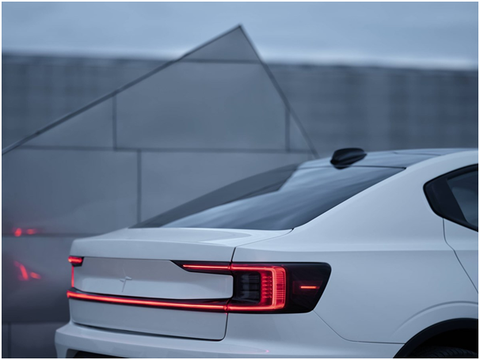
The Polestar 2's trunk is quite roomy, with 405 liters of storage space. The 1/3 to 2/3 folding rear seat enables a loading volume of 1,095 liters. Another compartment is hidden under the normal trunk floor, which still holds 41 liters. Only the irregular shape of the compartment limits its use a little. Practical, however, is the hinged hatch for skis in the middle of the back seat.
In the front, Polestar has also installed a small trunk (frunk). At 35 liters, it's not that big, but it's enough to stow away the obligatory charging cable which can be a real problem in every electric vehicle.
The Interior

The interior of the Polestar 2 is very Nordic, as in it’s very tidy and clear like all Volvo models. No wild jumble of what feels like hundreds of knobs, buttons, and levers here, it is very minimal and clean. It does come with a multifunction steering wheel with corresponding buttons, and a digital speedometer screen.
On the center console, the lever for the gear selection, plus a few buttons and the 11.1-inch display in portrait format is enthroned above it. The driver's door still has the usual buttons for windows, mirror adjustment, and central locking. But that's it. There's nothing more, and you don't need it either.
The (vegan) front seats are comfortable and offer reasonable lateral support. There is enough legroom in the second row, but the sloping roofline makes it a little tight in terms of headroom for people over 6.1’.
The Polestar 2 has great seats, and fine materials, but also a relatively bulky center console
The workmanship in the interior is exquisite. The materials are mostly of high quality and nothing creaks or squeaks when driving. In this regard, the Chinese prove once again that they do not (any longer) have to hide from European manufacturers when it comes to quality.
The continuous glass roof is also very well done. It offers a great view upwards, especially for the passengers in the back seat. As a small gimmick, the Polestar logo is projected onto the glass roof above the interior mirror.
The Tech

The Polestar 2 is the first electric car that relies entirely on Android or Google. You can log in with your Google account and, in addition to Google Maps, you can also use Spotify with the usual settings or playlists. Even the Google Play Store is available, but only a limited number of apps can currently be installed there.
Specifically, it only allows apps that have been released by Android Auto. So mainly music or podcast apps, but no video or game apps, which would of course also be nice, only when parked, of course. Polestar also wants to introduce over-the-air updates in the future so that the vehicle or the software can be further expanded and refined in the future.
The submenus are relatively self-explanatory and you don't have to spend hours looking for any settings. The speedometer display is also very clear and offers exactly the information that you would expect in an electric car.
The voice assistant from Google is absolutely top class. With "Hey Google" you can activate the voice control and it almost always understands you. In any case, significantly(!) better than all other voice controls that we have seen so far.
The Power
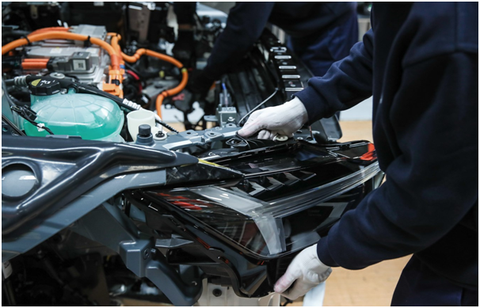
The technical key data of the Polestar 2 is quite impressive: A 78 kWh battery is installed in the underbody. The two permanent magnet synchronous motors on the front and rear axle together deliver 300 kW (408 hp) and a torque of 660 Nm. The Polestar 2 reaches 60 mph in 4.7 seconds and the vehicle locks at a top speed of 128 mph.
The Polestar 2 rolls through the country on 19-inch wheels with 245/45R19 tires as standard. The optional performance package comes with 20-inch wheels, improved front and rear brakes, gold brake calipers, gold seat belts, and manually adjustable Öhlins suspension.
The steering is direct and always gives you a good and safe feeling. The vehicle is very powerful both from a standstill and at higher speeds. Drive influences in the steering are sometimes noticeable only during strong acceleration and simultaneous steering.
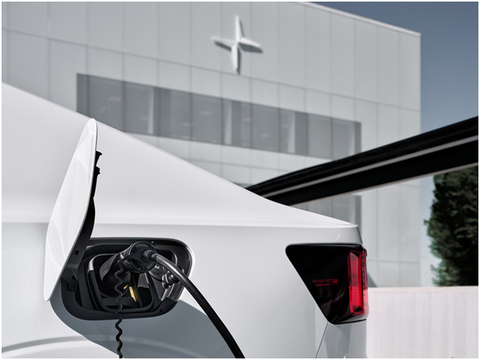
One-Pedal-Driving is solved in an exemplary manner. It can be adjusted in the menu whether you want to activate this or not and whether the vehicle should crawl like a conventional automatic converter when you release the brake or not.
There seems to be a debate on the official range. European WLTP specifies it as 290 miles while the American EPA specifies 233 miles. With the standard 19-inch tires and a drag value of 0.278, the EPA range for mixed urban/motorway driving should be more realistic in our opinion.
A CCS connection is available for quick charging on the go, which allows a charging capacity of up to 150 kW. The Polestar 2 can be charged from 0-80% in around 40 minutes on long-haul trips. When charging with AC at home, the Polestar 2 charges three-phase with 11 kW. It is also positive that you can set the upper charging limit in % on the display.
Conclusion
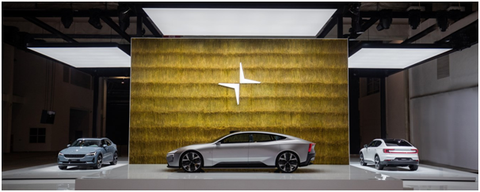
Polestar did a lot of things right with the Polestar 2. It is a pleasure to drive this car. The processing, the driving performance, and the driving behavior are clear plus points. The way in which Android was integrated into the vehicle can certainly be described as successful and clever.
The Polestar 2 is a very good choice in the mid-range segment. The overall package is convincing and the electric competitors from Germany, such as an Audi e-Tron or an EQC from Mercedes, are nowhere near as good as the Polestar 2.
You can order your Polestar 2 online right now through their website and you can even choose your car’s color from a matte catalog. Do not forget picking up some protective gear for it from the only company you can realistically use for a car this new, the Coverking. Especially check out the custom Polestar covers and floor mats, you are going to want to use them a lot.
Resources
- https://www.polestar.com/us/polestar-2/
- https://www.caranddriver.com/polestar/polestar-2
- https://www.topgear.com/car-reviews/polestar/2
- https://en.wikipedia.org/wiki/Polestar_2
- https://www.autoexpress.co.uk/polestar/2
- https://cars.usnews.com/cars-trucks/polestar/2
- https://www.carsguide.com.au/polestar/2
- https://ev-database.org/car/1488/Polestar-2-Long-Range-Dual-Motor
- https://www.edmunds.com/polestar/2/
- https://www.carwow.co.uk/polestar/2#gref
- https://www.giltrap.com/latest-news/2021/october/award-winning-polestar-2-eligible-for-full-clean-car-discount-in-new-zealand
- https://www.euroncap.com/en/results/polestar/2/42252
- https://www.electrifying.com/reviews/polestar/2/review
Tankut Basar
Tankut Basar is an ARA (American Rally Assoc.) Racing Driver and an FIA Bronze Category License Holder. His passion for driving began with karting like most racers. He started racing internationally at the age of 22. Tankut loves everything car-related and will keep enjoying the drive until the end.



